Are you looking to trek to the base camp of the highest mountain in the world, Mount Everest? This Essential Guide to Everest Base Camp Trek has got you covered! This guide provides extensive information on preparation, planning, and packing for the trek and first-hand accounts of the journey. It also covers important topics such as altitude sickness, acclimatisation, the Sherpa culture, and the significance of preserving the environment. This guide is the perfect resource for anyone eager to take on this incredible adventure.
- Everest Base Camp (EBC) trekking routes
- Everest Base Camp (EBC) Trek duration
- Understand the risks associated with high-altitude trekking
- Checklist of essential trekking items
- Looking for trekking gear and rental shops?
- Get advice from experienced trekkers
- Stay Up-to-Date with the Latest Weather Forecast from Everest Base Camp
- How to find a reliable guide and porter service for Everest Base Camp (EBC)?
- Costs for Nepal Government Trekking Permit
- Rules for trekking in the Everest region
- Acclimate to the altitude before beginning the trek
- Importance of hydration and nutrition on the Everest Base Camp (EBC) Trek
- Culture and Traditions
- Have a plan for emergencies
- Is Travel Insurance Necessary for EBC Trek?
- Summary
Everest Base Camp (EBC) trekking routes
Everest Base Camp Trek is a popular trekking route in Nepal, offering stunning views of the Himalayan mountains. The trail follows the traditional path taken by climbers attempting to summit Everest, starting from Lukla and ending at the Everest Base Camp. The route takes you to one of the most iconic landmarks in the world – the base camp of Mount Everest, the highest mountain in the world.
Everest Base Camp (EBC) Trek duration
The trek is often done over around 12-15 days and covers a distance of approximately 100km. The route takes you through some of the most stunning mountain scenery in the world, with spectacular views of the surrounding snow-capped peaks. The trek starts in Lukla, a small village in the Khumbu region. Along the way, you will pass through Sherpa villages, traditional monasteries, and lush forests.
Elevation and Altitude
The trek to Everest Base Camp takes place in the Khumbu region of Nepal and reaches an altitude of 5,364m (17,600ft). The areas surrounding the hike have elevations ranging from 2,844m to 5,545m (9,330ft to 18,150ft).
Best time to trek Everest Base Camp (EBC)
For the best trekking experience at Everest Base Camp, planning your trip between late March to May or September to December is recommended. Among these months, April and May are particularly favoured as the weather is pleasant, and the rhododendron forests are in full bloom, offering a stunning view. During these months, clear skies are typical, providing an unobstructed view of the world’s highest mountain peak.
Is The Everest Base Camp (EBC) Trek Difficult

The Everest Base Camp Trek is generally considered a moderately difficult trek. While it does require a certain level of fitness and endurance, it is a very achievable goal for most people. The terrain is often steep and uneven, and the altitude can be challenging, so taking your time and pacing yourself is important. If you have prior experience in trekking with a heavy backpack over long distances, the trek should be easy with proper acclimatisation. However, if you are a beginner trekker, you will need to train extensively for this journey, as it will likely be quite difficult.
Itinerary for Everest base camp trek
- Day 1: Arrive in Kathmandu and transfer to your hotel. Spend the day relaxing and exploring the city.
- Day 2: Fly from Kathmandu to Lukla and start the trek to Phakding.
- Day 3: Trek from Phakding to Namche Bazaar.
- Day 4: Acclimatisation day in Namche Bazaar.
- Day 5: Trek from Namche Bazaar to Tengboche.
- Day 6: Trek from Tengboche to Dingboche.
- Day 7: Acclimatisation day in Dingboche.
- Day 8: Trek from Dingboche to Lobuche.
- Day 9: Trek from Lobuche to Gorak Shep.
- Day 10: Trek to Everest Base Camp and back to Gorak Shep.
- Day 11: Trek from GorakShep to Kala Patthar and back to Lobuche.
- Day 12: Trek from Lobuche to Pheriche.
- Day 13: Trek from Pheriche to Namche Bazaar.
- Day 14: Trek from Namche Bazaar to Lukla.
- Day 15: Fly from Lukla

Understand the risks associated with high-altitude trekking
High-altitude trekking can be a thrilling experience, but it carries a certain risk. The primary risks associated with high-altitude trekking are altitude sickness, hypothermia, and the danger of falling due to slippery surfaces or steep slopes. Trekkers may also be exposed to extreme weather conditions, such as heavy snow, high winds, and lightning.
Altitude sickness is a real risk as trekkers ascend to higher and higher elevations. Symptoms of altitude sickness can include headache, nausea, fatigue, and difficulty sleeping. It is essential to be aware of these symptoms and to take precautions to avoid them.
Hypothermia is another risk when trekking at high altitudes. Hypothermia can occur when the body cannot maintain its temperature in a cold environment. Trekkers should wear layers and carry a sleeping bag to avoid hypothermia.
High-altitude trekking can be an incredible adventure, but it is essential to be aware of the risks associated. Finally, there is the risk of falling when trekking in areas with steep slopes or slippery surfaces. Trekkers should be aware of their surroundings and wear appropriate shoes for the terrain.
Checklist of essential trekking items
- Clothing: Appropriate clothing for the cold weather is essential. This includes multiple layers of synthetic or wool thermal base layers, fleece and insulated jackets, waterproof/breathable outer layers, waterproof pants, hats, gloves, and a good pair of warm boots.
- Backpack: Choose a lightweight and comfortable backpack of 40-50L capacity which will easily fit all your items.
- Sleeping bag: You need a high-quality sleeping bag rated to -20 degrees Celsius.
- Water: Water bottles, filters, and purification tablets are essential to stay hydrated.
- Food: High-energy snacks such as nuts, dried fruits, energy bars, and chocolate are ideal. You can also bring freeze-dried meals.
- Trekking poles: These will help you keep your balance during the trek. 7. First-aid kit: A basic first-aid kit with essential medication and items such as bandages and antiseptic cream.
- Sunscreen and sunglasses: Sun protection is essential for high-altitude trekking.
- Toiletries: Toothbrush, toothpaste, hand sanitiser, soap, and toilet paper

Looking for trekking gear and rental shops?
If you forget any of the essentials mentioned above, don’t panic! You can easily find them in larger cities like Kathmandu and Pokhara, which are filled with shops and outlets dedicated solely to trekking supplies. However, check the prices of the items you’re purchasing, as they may vary from shop to shop. You can also rent trekking gear from hire shops; the equipment is usually in good condition. While you can rent trekking shoes, it’s not recommended, as they need to be broken in and tailored to the individual’s feet for maximum comfort.
Get advice from experienced trekkers
Many experienced trekkers and adventure travellers are willing to share their experiences and advice. The best way to get advice from experienced trekkers for trekking Everest Base Camp Trek is by joining trekking forums or asking questions on social media platforms such as Facebook and Instagram. You can also find and join trekking groups on social media that focus on Everest Base Camp Trek and connect with other trekkers who have already been on the trek. Additionally, numerous websites, blogs, and articles are written by experienced trekkers with advice and tips for Everest Base Camp Trek.
Stay Up-to-Date with the Latest Weather Forecast from Everest Base Camp
The weather at Everest Base Camp is quite varied and can change drastically from day to day. Temperatures typically range from -20°C to 10°C (14°F to 50°F). The highest temperatures usually occur in the summer months of May, June and July, while the coldest temperatures occur in December, January and February. The area is known for its strong winds, which can often reach speeds up to 90 km/h (56 mph). The wind chill factor can make temperatures feel much colder than they are.
Due to its high elevation, the area is prone to heavy snowfall. The snow can be quite deep and reach over 2 meters (6 feet) in some areas. Snow can fall as early as September and continue until April. The area is also prone to thunderstorms, especially during the summer months. Lightning can be a significant hazard, and hikers should be aware of the increased risk of an electrical storm.
The weather conditions at Everest Base Camp are highly unpredictable, often preventing climbers from reaching the summit. Being well-prepared for adverse weather conditions is crucial when exploring this area. You can download a weather app to stay updated on the latest weather forecast.
How to find a reliable guide and porter service for Everest Base Camp (EBC)?
- Search online for reviews from past guides and Porter services customers. Read through the reviews to get a sense of the quality and reliability of the service.
- Ask for recommendations from friends, family and other trekkers who have completed Everest Base Camp Trek. That includes joining forums and social media groups, especially for the EBC trek.
- Speak to the guide and porter service directly. Ask questions about their experience, qualifications, and safety protocols.
- Compare the costs and services offered by different guide and porter services.
- Check that your guide and porter service is licensed and insured.
- Make sure the guide and porter service you choose is familiar with the route and can provide you with maps, itineraries and other resources.
Costs for Nepal Government Trekking Permit
The Nepal government requires trekkers to obtain a permit to visit the Everest Base Camp. The permit fees vary depending on the route taken and the duration of the trek. Everyone who goes high-altitude trekking in Nepal must purchase specific permits to enter the trek routes. These are:
- An entry permit into the relevant national park or conservation area
When visiting any of Nepal’s national parks, there is a one-time entrance fee of approximately $25, regardless of the duration of your stay. The Everest Base Camp trek lies inside the Sagarmatha National Park. - A Trekking Information Management System (TIMS) card
If you plan to trek to Everest Base Camp, know that you need a Trekking Information Management System (TIMS) card. This is a mandatory requirement aimed at regulating the trekking industry and ensuring the safety of trekkers. The cost of obtaining the card is around $20 for solo travellers and $10 for those in a group. - Rural municipality trekking permits
Some municipalities charge trekkers an additional fee. Those trekking to Everest Base Camp must purchase the Khumbu Rural Municipality Permit for around $20.
Rules for trekking in the Everest region
All trekkers must register with a trekking agency and obtain the necessary permits before beginning their trek.
- Trekkers must also hire a guide and/or porter to accompany them and provide assistance while trekking.
- Trekking parties must not exceed ten people.
- Trekkers are not allowed to camp near villages and must stay in designated camping areas.
- Trekkers must respect the local culture, customs, and environment.
- Trekkers must carry their own trash and dispose of it properly.
Starting in April, all foreign trekkers must have a licensed guide, whether alone or with a group. The Nepal Tourism Board (NTB) announced this in early March, and this rule applies to cyclists and hikers. To obtain a guide, visitors must contact trekking agencies registered with Taan (Trekking Agencies Association of Nepal). There are over 2,000 government-approved trekking and mountaineering guiding companies.
Although the Trekking Agencies Association of Nepal (TAAN) has announced a rule for needing a mandatory guide, there are no apparent signs of its implementation on some trekking routes.
Acclimate to the altitude before beginning the trek
- The trek is physically demanding and requires a good fitness level. So keep yourself fit.
- Give yourself plenty of time to adjust. Before hiking, taking at least 1-2 days at the same altitude is recommended. If more time is needed, it is best to take it.
- Take it easy. Avoid overexertion and try not to push yourself too hard. 4. Stay hydrated. Drink plenty of water and electrolyte drinks to help your body adjust.
- Eat light meals that are high in carbohydrates.
- Get plenty of rest. Give your body time to adjust to get used to the altitude.
- Take breaks. If you feel short of breath, stop and rest for a few minutes before continuing.
- Use oxygen if available. If available, use supplemental oxygen to help your body adjust.
Importance of hydration and nutrition on the Everest Base Camp (EBC) Trek
The Everest Base Camp Trek is a challenging trek that requires excellent physical and mental stamina. Staying hydrated and well-nourished while on the trek is essential to ensure your body can cope with the high altitude and strenuous trekking conditions.
Hydration is essential for maintaining energy levels, preventing altitude sickness and keeping your body functioning optimally. Staying hydrated throughout the trek ensures your body has sufficient water to sustain itself. This can be done by drinking plenty of fluids and eating water-rich foods like fruits and vegetables.
Nutrition is also important for the Everest Base Camp Trek. Eating the right foods can provide the body with the energy and nutrients it needs to cope with the rigours of the trek. Eating a balanced diet rich in carbohydrates, proteins, fats, and vitamins will help keep your energy levels up and your body well-nourished. It is also important to stay hydrated while eating to ensure that the body can absorb the nutrients from the food.
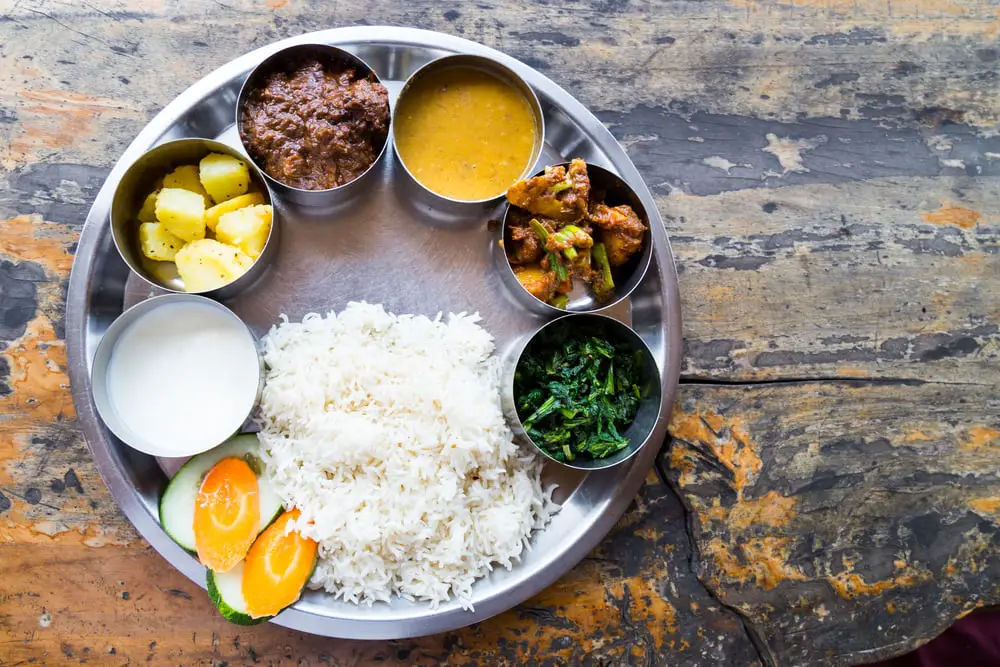
Culture and Traditions
The people of the Everest region have a unique and vibrant culture shaped by the landscape and environment surrounding them. This culture is based on a shared belief in the power of nature, spiritual and religious practices, a strong sense of community and respect for their elders.
The core of the culture of the Everest region is based around the Sherpa people, a Tibetan ethnic group who live in the area and have been living there for centuries. They are typically Buddhist, and their cultures and traditions are based on this religion and their traditional beliefs in the power of nature and the spiritual world.
The Sherpa people are renowned for their strong sense of community and willingness to help those in need. This is reflected in how they build their homes, which multiple families often share. They also have a strong sense of hospitality and often invite travellers into their homes to share their stories and culture.
The Sherpa people are also well known for their incredible mountaineering skills. This is primarily because they have lived in the area for centuries and understand the terrain and elements better than anyone else. They are often hired as guides and porters for those attempting to climb Mount Everest.
Have a plan for emergencies
An emergency plan for trekking to Everest Base Camp must be in place before the trek begins. The plan should include:
- A list of emergency contact numbers, such as local police and rescue teams and any nearby medical facilities.
- A map of the area.
- A plan of action in the event of an emergency.
- A mobile phone with enough credit throughout the trek.
It’s essential to have an emergency plan when going on a trek, including evacuation routes and a plan for medical care. The plan should be reviewed and discussed before the trek, and all trekkers should be familiar with it so they know what to do in an emergency. The guide will brief all trekkers on how to respond in an emergency.
Is Travel Insurance Necessary for EBC Trek?
The mountainous terrain of the Himalayas poses many risks, and without adequate insurance, you could be left exposed in the event of an accident or illness.
When considering travel insurance for the Everest Base Camp Trek, look for a policy that covers you for the following:
- Medical coverage: This is the most crucial element of any travel insurance policy; make sure that the policy covers evacuation and air ambulance costs if you need to be taken to a hospital in a different country.
- Trip cancellation: To ensure you’re prepared for unexpected events that may prevent you from travelling, it’s essential to have coverage for trip cancellation. Seek out a policy that provides full reimbursement for your trip’s cost if you cannot go.
- Trip interruption: This covers you if you have to cut short your trip due to an unexpected illness or injury. Again, look for a policy that offers reimbursement of up to the full cost of the trip.
- Baggage and personal items: Make sure your policy covers the cost of any lost or damaged baggage and personal items.
- Adventure activities: If you plan to participate in any adventure activities, such as paragliding or rafting, ensure that your policy covers these activities.
Finally, ensure that you read the policy documents carefully to understand what is and is not covered. The last thing you want is to be left exposed in the event of an accident or illness.
Summary
The trek commences in Lukla, where trekkers can buy supplies and meet their guides at the local market. The journey takes hikers through Namche Bazaar, Tengboche Monastery, and the highest village in the world, Gorakshep. Along the way, trekkers can enjoy stunning mountain views, explore the local culture, and experience the thrill of reaching the highest point on earth. After reaching the Everest Base Camp, trekkers can hike to Kala Patthar, a peak that offers a spectacular view of the world’s tallest mountain.
The Everest Base Camp trek is a popular adventure for trekkers worldwide. It’s a challenging but rewarding two-week hike through the breathtaking Himalayan Mountains, with an elevation of over 5,000 meters.
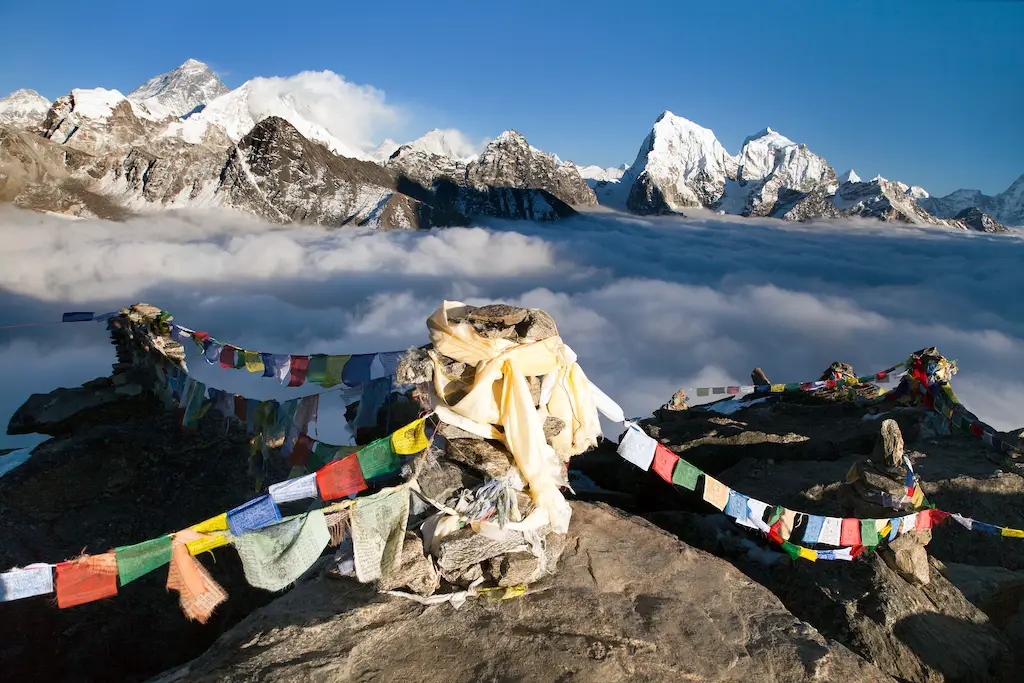
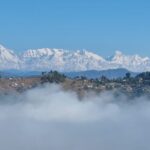
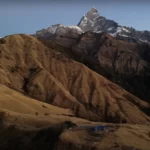
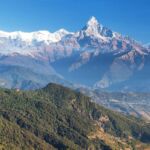

Leave a Reply